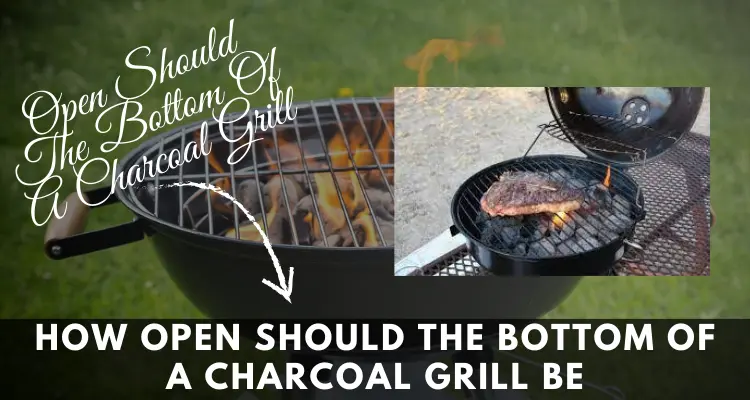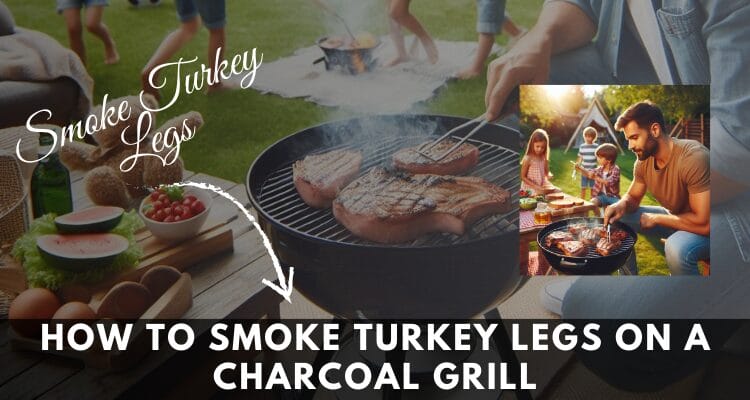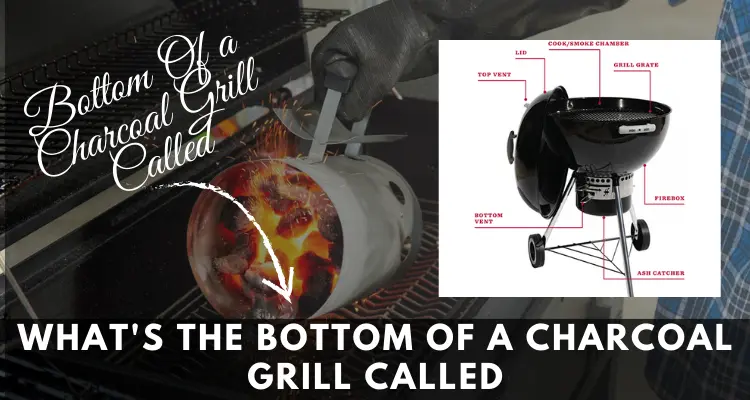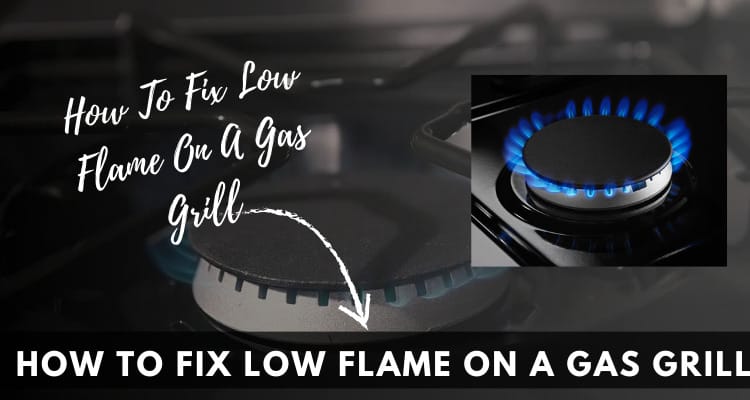How Open Should The Bottom Of A Charcoal Grill Be
Are you ready to up your grilling game? One key factor that often gets overlooked is how open the bottom of your charcoal grill should be.
Finding the perfect balance of airflow can make all the difference in achieving that mouthwatering, perfectly cooked BBQ.
The answer may vary depending on different factors such as weather conditions, type and quality of charcoal used, size and design of your grill, and personal preference. However, there are some general guidelines that can help you achieve optimal airflow for your specific setup.
In this blog post, we’ll dive into just how open (or closed) the bottom of your charcoal grill should be for optimal results.
Get ready to take your grilling skills to the next level!
Importance of Proper Air Flow in a Charcoal Grill
Proper air flow is crucial for a successful and efficient grilling experience on a charcoal grill. It not only affects the cooking process but also impacts the overall taste and flavor of your food.
- One of the main reasons why proper airflow is important in a charcoal grill is because it helps regulate the temperature.
- Charcoal grills rely on oxygen to keep the coals burning, and without adequate airflow, they can quickly lose heat and die out.
- This can result in unevenly cooked food or cause your fire to go out completely.
- Moreover, an optimal airflow allows for better control over the temperature of your grill.
- The bottom vents are responsible for controlling the amount of oxygen that enters the grill, which in turn regulates the intensity of the fire.
- By adjusting these vents, you can either increase or decrease the heat inside your grill as needed.
- Another benefit of proper air flow is that it promotes even heating across your cooking surface.
- When there is good circulation of air, it ensures that all parts of your grill receive equal amounts of heat, preventing any hot spots or cold spots from forming.
- This is particularly important when grilling larger cuts of meat or multiple items at once.
So the next time you fire up your charcoal grill, remember to adjust the bottom vents accordingly for a successful grilling experience.
Factors to Consider when Deciding How to Open the Bottom of Your Charcoal Grill Should Be
When it comes to grilling with a charcoal grill, one of the most important aspects to consider is the airflow.
The bottom vents on your charcoal grill play a crucial role in controlling the amount of oxygen that enters and circulates within the grill, which ultimately affects how hot your coals will burn and how well your food will cook.
But how open should the bottom vents be? This is a common question among both novice and experienced grillers. The truth is, there is no one-size-fits-all answer.
The decision on how open or closed the bottom vents should be depends on several factors that we will discuss in this section.
1. Type of Charcoal Grill
The first factor to consider when deciding how open the bottom of your charcoal grill should be is the type of grill you are using. There are two main types: kettle grills and kamado-style grills.
→ Kettle grills have a circular shape with a lid and adjustable air vents at both the top and bottom. These vents help regulate heat by allowing air to flow through, creating convection currents evenly distributing heat throughout the grill.
→ On the other hand, kamado-style grills have an egg-shaped design made from ceramic material with only one vent at the top. These types of grills are known for their excellent heat retention capabilities due to their thick walls, but they require careful monitoring of airflow by adjusting the single vent at the top.
2. Temperature Control
Another crucial factor to keep in mind when determining how open or closed your bottom vents should be is temperature control.
If you want high temperatures for searing steaks or cooking pizzas, then opening up all or most of your bottom vents can allow more oxygen into your coals, resulting in hotter temperatures.
Conversely, if you’re looking for lower temperatures for slow-cooking ribs or smoking meats, lessening airflow by partially closing some or all of your bottom vents can help regulate the temperature and create a more indirect heat source.
3. Wind Conditions
Wind can greatly affect the airflow in your charcoal grill, making it challenging to control the temperature.
On windy days, you may need to adjust your bottom vents accordingly. If it’s a particularly windy day, consider partially closing them to prevent too much oxygen from speeding up the burning process of your coals.
4. Size and Shape of Food
Consider the size and shape of the food you are cooking when deciding how open or closed your bottom vents should be.
Foods that require higher temperatures like steaks or burgers may benefit from opening up all or most of your bottom vents for maximum heat.
In contrast, larger cuts of meat like whole chicken or pork shoulder may require lower temperatures and indirect heat, which can be achieved by partially closing some or all of your bottom vents.
There is no hard and fast rule on how open the bottom vents of a charcoal grill should be. It ultimately depends on various factors such as the type of grill, desired temperature, wind conditions,
Different Techniques for Adjusting Air Flow in a Charcoal Grill
There are various techniques for adjusting the airflow in a charcoal grill, and each one has its own benefits.
In this section, we will discuss some of the most common methods for controlling airflow and achieving the perfect temperature for your grilling needs.
1. Top Vent Adjustment
The top vent is located on the lid of the charcoal grill and is responsible for releasing hot air and smoke from inside.
By adjusting this vent, you can control how much heat escapes from your grill. If you want to increase the temperature inside, open the top vent wider to allow more oxygen into the fire.
On the other hand, if you want to lower the temperature, close it partially or completely.
2. Bottom Vent Adjustment
The bottom vent is located at the bottom of your charcoal grill and is responsible for supplying oxygen to fuel your fire.
By opening up this vent wider, you can provide more oxygen to your coals, which will result in a hotter fire.
Conversely, closing off this vent will reduce airflow and lower the temperature.
3. Partially Open Bottom Vent
Another technique that many experienced grillers use is partially opening both vents instead of fully opening one or keeping both closed.
This method allows for more precise control over temperatures by balancing out airflow between both vents.
4. Using an Airflow Controller
For those who like gadgets and technology, there are also options available to control airflow with a specialized tool called an airflow controller or damper system specifically designed for charcoal grills.
These devices attach to either one or both vents and allow you to adjust airflow using dials or knobs conveniently.
5. Adjusting Charcoal Placement
Another factor that affects airflow in a charcoal grill is how you arrange your coals inside it.
Placing them closer together increases combustion rate due to reduced airflow while spreading them out creates space between them allowing more oxygen into each coal piece and providing high heat output.
6. Adding Wind Shields
If you are grilling in windy conditions, the wind can significantly affect your grill’s airflow.
To counter this, you can use simple materials like aluminum foil or a heat-resistant barrier to shield your grill from direct wind exposure.
Tips for Achieving Optimal Results with Proper Air Flow in Your Charcoal Grill
Proper air flow is essential for achieving optimal results when using a charcoal grill.
It not only helps in the ignition process but also ensures consistent and even cooking of your food.
In this section, we will discuss some important tips for maximizing airflow in your charcoal grill to achieve the best results possible.
1. Keep the Bottom Vents Open
The bottom vents on a charcoal grill are responsible for controlling the amount of oxygen that enters and fuels the fire.
It is important to keep these vents open during cooking to maintain a steady supply of oxygen to keep the fire burning strong.
Closing them too much can restrict air flow and result in a weak or uneven fire, leading to undercooked or overcooked food.
2. Adjust Vent Positions
Most charcoal grills have adjustable vents at both the bottom and top, which allow you to control the draft and regulate the temperature inside the grill.
When starting your grill, it is recommended to keep both vents fully open until you reach your desired cooking temperature.
Once achieved, adjust the vents accordingly – partially closing them can help lower temperatures while opening them wider can increase heat.
3. Use Charcoal Chimney Starter
A chimney starter is an efficient way to start a charcoal grill as it creates proper airflow from the bottom-up rather than the top-down like traditional methods (such as a lighter fluid).
This ensures even distribution of heat throughout the coals and minimizes any hot spots in your grill.
4. Arrange Coals Properly
How you arrange coals in your grill can greatly affect air flow and ultimately cooking results.
For example, if you pile up too many coals in one area, it may block proper ventilation preventing other areas from getting enough heat resulting in unevenly cooked food.
5. Avoid Overcrowding
Overcrowding your grill with too much food can also hinder proper air flow causing temperature fluctuations throughout different areas of the grill.
Leave some space between each piece of meat or vegetables to allow air to circulate freely.
6. Monitor the Top Vent
While the bottom vents control the amount of oxygen entering your grill, the top vent is responsible for releasing excess smoke and heat.
It is essential to keep an eye on this vent and adjust it if necessary to maintain proper airflow.
Unique and Creative Ways to Use Air Flow to Enhance Your Grilling Experience
If you’re a grilling enthusiast, you know that airflow is essential for the perfect cookout. It’s what creates those beautiful grill marks and ensures even cooking.
But did you know that airflow can be used in unique and creative ways to enhance your grilling experience?
In this section, we’ll explore some unconventional methods to use air flow in your charcoal grill.
1. Reverse Sear Method
Instead of starting with high heat and searing your meat first, try using the reverse sear method by placing your meat on the cooler side of the grill and closing the lid.
This allows for indirect heat to slowly cook the meat, resulting in a more evenly cooked and juicy piece of meat.
Once it’s almost done, open up the vents at the bottom of the grill to increase airflow and move the meat to direct heat for a quick sear.
2. Smoking with Wood Chips
Adding wood chips to your charcoal grill not only adds flavor but also enhances airflow.
Soak your wood chips in water for 30 minutes before adding them on top of hot coals.
The moisture from the soaked chips will create smoke as they burn, which will circulate around your food giving it a smoky flavor.
3. Using Foil Packets
Experiment with different flavors by creating foil packets filled with herbs, spices, or even fruits like lemon slices and placing them on top of hot coals in one corner of your grill while cooking meats or vegetables in another corner.
The steam created from these packets will add moisture and infuse flavors into your food.
4. Grilling with Cast Iron Skillets
Cast iron skillets are excellent conductors of heat and are perfect for creating an intense burst of heat when placed directly over hot coals.
You can use them to cook smaller items like shrimp or veggies without worrying about them falling through traditional grates.
5 . Air Flow Control
Controlling air flow is crucial for maintaining the temperature of your grill. If you’re cooking in windy conditions, try closing the bottom vents partially to reduce airflow and prevent your coals from burning too quickly.
On the other hand, if it’s a hot summer day and you need to keep your grill at a lower temperature, open up the vents fully to allow more air in and cool down the coals.
Safety Precautions and Maintenance for Your Charcoal
Charcoal grilling is a popular and delicious way to cook food, but it’s important to take proper safety precautions and properly maintain your charcoal in order to have a successful grilling experience.
In this section, we will discuss some important safety tips and maintenance techniques for your charcoal.
Firstly, it’s crucial to always handle charcoal with care. Charcoal can be hazardous if not used properly, so it’s important to follow these safety measures:
- Always store charcoal in a cool, dry place away from any flammable materials.
- Never use gasoline or lighter fluid on already lit coals as this can cause dangerous flare-ups.
- Use long-handled tools when placing or moving hot charcoals.
- Keep a fire extinguisher nearby in case of emergency.
- Ensure that the grill is placed on a flat and stable surface to prevent any accidents.
In addition to these precautions, it’s also important to properly maintain your charcoal grill. This will not only ensure safe grilling but also prolong the life of your grill. Here are some essential maintenance tips:
1. Clean Your Grill Regularly
After each use, make sure you clean out any remaining ash and debris from the bottom of the grill. This will help prevent clogs which can affect air circulation and temperature control.
2. Season Your Grill
Before using your new charcoal grill for the first time, it’s recommended to season it by coating the inside surfaces with vegetable oil and heating until smoke appears.
This process helps create a non-stick surface that makes cleaning easier.
3. Check for Damage
Regularly inspect all parts of your grill for any signs of wear or damage such as rusted components or loose screws. If you notice any issues, address them immediately before using the grill again.
4. Replace Old Charcoal
Over time, old charcoal can become damp or contaminated which affects its performance and could potentially be unsafe for cooking food over. It’s recommended to replace old charcoal with fresh, dry briquettes for each use.
5. Store Your Grill Properly
When not in use, make sure to store your grill in a covered area to protect it from the elements.
If you live in an area with harsh weather conditions, consider investing in a grill cover to further protect your grill.
Conclusion
In conclusion, the amount that you should open the bottom of a charcoal grill depends on various factors such as the type of food being cooked, outside temperature, and wind conditions.
It is important to experiment and find what works best for your specific grill and cooking needs.
However, always make sure to keep it open at least partially to allow proper air circulation for even heating and preventing flare-ups.
With these tips in mind, you can confidently fire up your charcoal grill and enjoy deliciously grilled meals all summer long.






